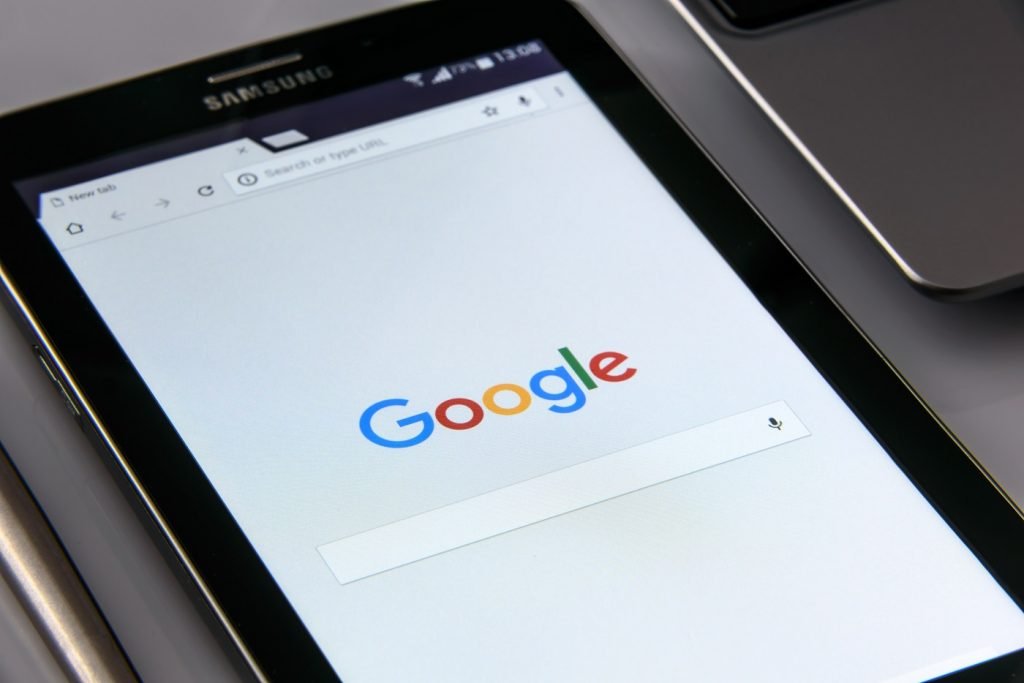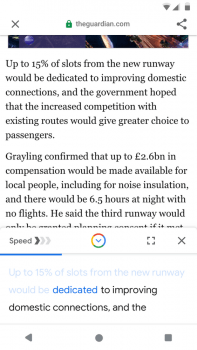Google announced on Tuesday that its Go app, a lightweight, faster version of its search function for devices with little space and unreliable internet connections, can now read articles and web content out loud in 28 supported languages, thanks to AI technology partly developed in Israel.
The text-to-speech feature will allow users to listen to news stories, long-form articles and other content – much like the radio – and has play, pause, and speed functions, Venture Beat reported.
In a blog posted earlier Tuesday, Yossi Matias, Google VP of engineering and the managing director of Google’s R&D Center in Tel Aviv, and Simon Tokumine, a Google senior product manager, laid out the details of the new technology.
They wrote that “despite the rapid growth of audio and video content online, the web is still predominantly made up of lengthy, text-based pages which aren’t always easy to read on the go,” and that Google received a number of requests to make web content more accessible.
“Powered by natural language processing and speech synthesis AI, this technology can read aloud billions of webpages in 28 languages smoothly, and in a natural sounding voice, even on 2G connections. It also uses minimal cellular data. This technology relies on AI to determine which parts of a page to read, and which to leave out, so you only listen to what is important,” Matias and Tokumine said.
SEE ALSO: Meet Google Israel’s Yossi Matias, The Genius Behind Many Of Google’s Most Stunning Achievements
With this technology, “consuming long-form text becomes as easy as watching TV or listening to the radio,” and can be helpful when multi-tasking (cooking, exercising, driving), they explained.
The feature can also be useful for people with visual impairments and those wanting to learn new languages, as the text on a given webpage is highlighted when read aloud, allowing users to follow along.
Image descriptions in articles are being considered for future Go versions.
Matias and Tokumine said “people using Google Go come from many different backgrounds, and some might want extra tools to help read and pronounce new words – for example those with visual or reading impairments, people studying a foreign language, or those less comfortable reading long text. Today’s update makes it easier for anyone to access the richness of the web.”
Matias told Venture Beat in an interview that Google was now looking for ways to make the service more adaptable and personalized, perhaps with summarization and selective reading abilities, and was aiming use text-to-speech further across its apps and services.
“This presents some interesting opportunities in the future, as is the case for many other forms that we are using TTS, which is how to improve the experience, how to make it more natural, how to adapt it, how to personalize it. These are kind of interesting directions that we may be exploring in the future,” he told the magazine.
Sign up for our free weekly newsletter
Subscribe“At this time, we are starting with the basics. As we think about more of the research aspects of text understanding, being able to analyze and decide what to read, there are some interesting questions that one can envision in the future. One is summarization, another one is [getting] me to the part that is of most interest to me, if we’re talking about long text,” he added.
Google made the official announcement of Go’s new capabilities at the Google 4 India event in New Delhi on Tuesday, an annual conference where the tech giant unveils features and technologies geared toward the Indian market.
Google said in a statement cited by TechCrunch that the new feature was “inspired by user research in India, where we heard from people how important it is to understand information effortlessly. Especially for people coming online for the first time, consuming long-form text on a small device can be difficult and time-consuming. With this new feature, you can just press play and follow along.”
SEE ALSO: Need A Dinner Reservation? Israeli Tech Powers Google’s New Human-Sounding Assistant To Book It
Google Go is available in 26 countries across Asia, South America, and Africa. It was announced late last year and first launched in 2018 in India and Indonesia.
“Google Go is tailor-made for the millions of people in those countries coming online for the first time. It’s simple to use and fast even on entry level devices and spotty connections, making discovering, sharing and finding content easier and more reliable,” wrote Caesar Sengupta, VP of Google’s Next Billion Users Team, the company’s initiative to reach users in emerging markets who are “the future of the internet.”
Google also unveiled Gmail Go and YouTube Go earlier this year with the same idea in mind – to provide services that take up less storage and work quickly with devices in the low- to mid-price range.
R&D in Tel Aviv
Earlier this year, Google unveiled a human-sounding robot capable of conducting natural conversations over the phone as part of the Google Assistant. It’s called the Google Duplex and the key people behind the technology are Matias, and Yaniv Leviathan, principal engineer at Google.
Duplex was able to make a haircut appointment, a dinner reservation, and generally carry out very specific tasks.
The technology, said Google CEO Sundar Pichai, “brings together all our investments over the years [including in] natural language understanding, deep learning, [and] text-to-speech.”
Related posts

Editors’ & Readers’ Choice: 10 Favorite NoCamels Articles

Forward Facing: What Does The Future Hold For Israeli High-Tech?

Impact Innovation: Israeli Startups That Could Shape Our Future






Facebook comments